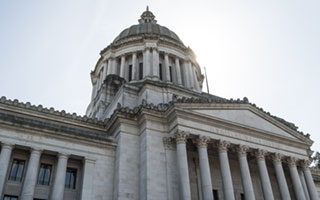No company in the state has shown nearly the same surge in growth in recent years as Seattle-based Amazon.
Now in its 25th year, Amazon has grown to become the state’s second-largest employer, surpassing Microsoft and second only to Boeing. The Seattle Times this week reported that as of June 30, Amazon’s payroll of 53,500 employees in its headquarters region trailed only Boeing, at 69,830 and nudged ahead of Redmond-based Microsoft at 51,854.
Amazon’s pace of employment growth in the Seattle area has been nothing short of impressive the past decade. Amazon employment has grown tenfold since it employed about 5,000 in 2010.
All of this growth drives the state’s healthy economy, pours rising tax income into state and local governments and has the potential to pump new life into retailers across the state.
Consider these additional facts reported by The Times:
- Amazon paid its local employees $9 billion last year.
- The average annual wage of Amazon employees was $179,000 in 2018.
- A new report Amazon commissioned credited the company with $111.2 billion invested in buildings and salary over the past nine years. The investment supported 14.5% of jobs in the Seattle-Tacoma-Bellevue areas.
- The company reports it paid $250 million in state and local taxes in 2017. The company employs nearly 650,000 full and part-time employees filling orders across the world.
- This week, Amazon began a new hiring surge to fill 10,000 jobs in the Seattle area by 2020, the majority of which are new positions.
Two outcomes are undeniable. Amazon has diversified the region’s economy and contributed to what The Times called an unparalleled economic boom.
Less obvious perhaps is how Amazon’s health has been crucial to the small business community. Smaller companies who choose Amazon as their online sales platform enjoy annually increasing profiles as more shoppers learn to depend upon Amazon to address their shopping needs and wants.
As the region and state benefit, they also face new challenges of managing the traffic and higher living costs that result from thousands of well-paid new employees moving to the state every year.
But the region appears to be responding. A spokesman for the Puget Sound Regional Council reports that our region is investing more per capita than anywhere else in the country on transportation while housing construction has accelerated.
Even catching up with growth creates more jobs.





